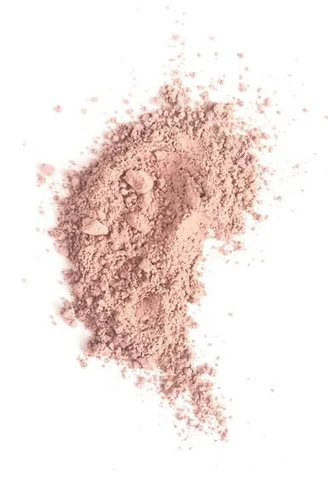
Can Niacinamide and Hyaluronic Acid be used together?
Many studies have shown that we are becoming more knowledgeable about skin care formulations. So I noticed that many of you have a lot of questions about specific skin ingredients and how to incorporate them into your daily routine. Don’t worry, because by the end of today’s article, you will have more knowledge about skin care and how to use hyaluronic acid and niacinamide together.
Which came first, hyaluronic acid or niacinamide?
Both ingredients are water-based, which means they have amazing hydrating abilities that lock moisture into the skin, plumping it up, making it radiant, and visibly reducing the signs of premature aging and dry skin. If you use them together, there is a specific way to use them, starting with a hyaluronic acid-infused serum that helps to initially provide optimal hydration to the skin. Then apply niacinamide, which can also be applied in the form of a serum. It helps regulate sebum production (the natural oils that the skin needs to stay healthy) and also minimizes the appearance of pores. For an all-around radiant, youthful, even-toned skin, lock in moisture and double the moisture.
What to use after this powerful cocktail is entirely up to you and what works best for your skin. Many dermatologists prefer to use 1-2 different complementary serums at the same time for the most effective skin results. Plus, it provides the added benefit of applying a moisturizer that creates a protective barrier on the skin, keeping the top layer of the skin and its microbiome soft and healthy, while the active ingredients hyaluronic acid and niacinamide work deep down in the lower layers of the skin.
How to use niacinamide and hyaluronic acid?
There are a variety of skincare products that contain these powerful ingredients:
Face cleansers
Serums
Moisturizers
Facial oils
Cream masks
Sheet masks
All of these are effective, and it’s easy to find the best one to fit into your routine. However, you need to keep one thing in mind: how quickly you want to see results, as this largely depends on how long the product is left on the skin. For example, serums are applied and left on the face, so they have a long time to be absorbed into the skin compared to a face wash or cleanser that is rinsed off after a few minutes.
What all this boils down to is that you have consulted with your doctor or dermatologist to discuss whether these ingredients are safe for you, and that you have done a 24-hour patch test on your forearm before applying the product to an entire area of skin to ensure that you avoid any unnecessary skin allergies or irritation.
If you want my advice, I would recommend choosing a well-formulated individual serum that contains these active ingredients as the main “hero” of each product. This will give you the quickest, most effective results without overloading the skin, as they each work on different areas while working well together, a very unusual feature as you may already know if you have been following our recent posts.
Can I Use Niacinamide Every Day?
Not only can Niacinamide be used daily, it can even be used twice a day! Many people find that using a product containing Niacinamide in the morning can leave the skin feeling comfortable and youthful, while the other ingredients are quickly absorbed into the skin. When used in your evening routine, it can counteract any damage done throughout the day and help your skin recover in the morning.
Niacinamide is a form of Vitamin B3, and its lightweight consistency makes it a popular ingredient in water-based serums. It absorbs quickly into the skin and while remaining on the skin, it keeps the skin hydrated through its hydrating properties. This clever ingredient has a variety of skin benefits, such as helping to create a strong protective barrier on the outer surface of the face. It can help repair and prevent further damage that occurs when the skin is exposed to free radicals throughout the day, such as from: B. environmental pollution, UV rays, and other environmental stressors.
If you want to learn more about Niacinamide and its skincare benefits, you can read our blog post where we tell you everything you need to know about this hydrating wonder.
Can I use Hyaluronic Acid Every Day?
Similar to Niacinamide, Hyaluronic Acid is found in an impressive array of skincare products and is also completely safe to use twice a day. It is a very effective ingredient that locks moisture into the skin and keeps it hydrated. It is important to remember at what stage of your daily routine you should use Hyaluronic Acid. What I mean by this is that it needs to remain on the surface of the skin in order to work, especially when formulated as a serum. Applying it after moisturizer or even sunscreen not only creates a physical barrier that prevents the Hyaluronic Acid from reaching the lower layers of the skin, but it also prevents the Hyaluronic Acid from working its hydrating properties, resulting in slower skin results.
Hyaluronic acid is a naturally occurring molecule in the skin that acts like a sponge, soaking up all the moisture from the area around your face and any other products you subsequently apply to your skin. Its ability to retain moisture results in an overall improved facial appearance, with fine lines and wrinkles visibly reduced and dry patches of skin becoming a thing of the past. You can find a ton of information about Hyaluronic Acid in our blog post. So don’t forget to check that out if you want to learn more.
So tell us, what more do you know about these trending ingredients today? If you love skincare, join other beauty insiders on the Procoal Instagram page for daily skincare tips, how-tos and new product launches. And if you have any questions about your skin, don’t forget to ask us. Just send us a DM and we’ll see you there!
Don’t miss out on more skincare tips and expert advice on our YouTube channel! Click the “Subscribe” button to visit our green couch. You won’t regret it!


